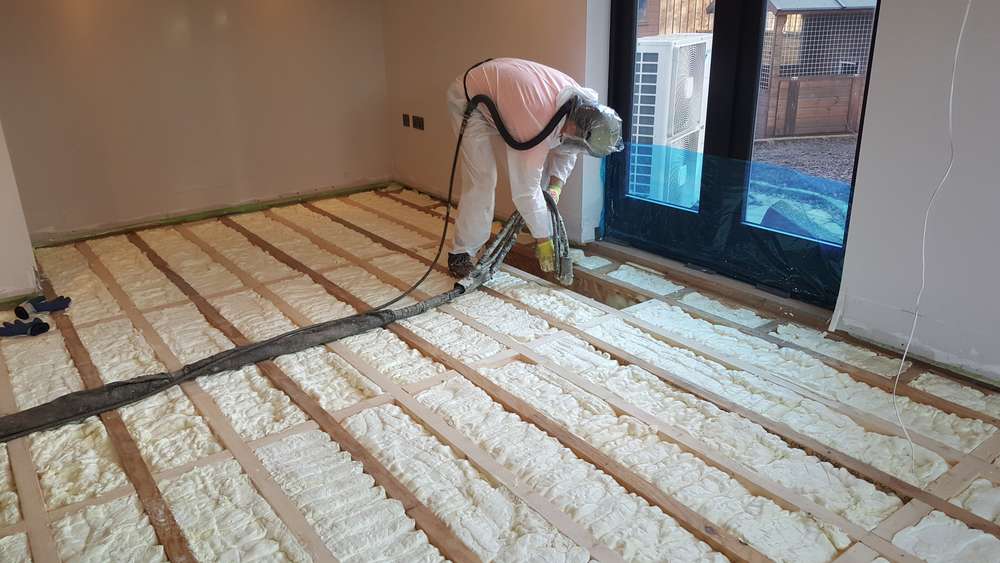Attic Spray Foam Insulation Thomastown
3 Bed Semi Attic Insulation Thomastown

Attic Insulation Thomastown
Spray foam can be useful in many conditions. Spray foam is useful in roofs, windows, attics, underfloor heating systems, interior and exterior walls, as well as roofs.
Spray foam insulation will keep your home warm during winter and cool in summer. It allows moisture-laden air, such as from the basement, to escape thanks to its structure and cell structure.
Benefits of Spray Foam Insulation for your home
Other applications include agricultural farm houses and commercial andindustrial buildings, sheds and shipping containers.
It also forms an airtight seal around your home to prevent rain and cold wind from entering. This is a major disadvantage over other insulation products currently on the market, as it allows heat to escape from your home.


Cost Price Of Spray Foam Insulation
Spray foam insulation has proven to be the most effective insulation material on the market today. It has a higher U value than other insulating materials such as rock wool, fiberglass and cellulose.
Spray foam insulation is excellent as a sound barrier. Spray foam insulation reduces outside noise significantly. This is especially advantageous for homes or companies that are located in densely populated cities or near airports.
Insulate Your Thomastown Property Properly
It’s commonly used to block sound from traveling between rooms or floors. It is particularly useful in bathrooms, where the noises of flushing toilets and showers can be annoying.
It is very easy to use and doesn’t cause any disruption to everyday life.
In just one day, you can insulate an Irish home.
Encasing and isolating pipes reduces noise in the walls or under-floor.

Boards should be laid over the joists if the loft or attic is to be used for storage. You won’t get thick insulation if the insulation isn’t thick enough if the insulation is only applied between the joists.
It dramatically reduces sound transference when used within walls and attics, roofs, floors and roofs. This is in contrast to fibreglass and rock wool as well as polystyrene and polystyreneboards. Its dense composition, and its application process results in an envelope that is completely airtight. It is able to block sound from the exterior environment (e.g. traffic, pedestrians, etc.) and prevents infiltration in areas where there are airports or heavy industries.
It also blocks sounds from a structure’s walls from reaching other floors, including the floors below. Spray foam insulation will dramatically reduce the sound levels of many noises within a structure, including talking, hair dryers (phones), office computers and printers as well as running showers, laundry machines, clothes dryers.
Spray foam insulation is flexible and filled with millions upon millions of microscopic air bubbles. This not only absorbs the vibrations and stops sound from passing through the floor, but also prevents sound from being transferred. Spray foam insulation reduces airborne noise transmission by sealing all cracks and crevices.
Spray foam insulation can also dampen, if not completely eliminate, sounds from floors such as water moving through pipes. It surrounds pipes securely, preventing them rattling. It also eliminates the sound caused by hot water flowing through pipes. The heating system heats wooded Joists, causing them to expand, creak and groove.
It also stops heat escaping from the upper floors. Lower floors become cooler which, in turn, requires more heat. Upper floors then become too hot.
If the loft is accessible and free from damp or condensation, insulation should be simple. In many cases, you can do it yourself.
An uninsulated home loses 25% of its heat through its roof. Insulating your flat roof, attic, or loft can help reduce heat loss and decrease your heating costs.
Rolls of mineral wool insulation can be used if access is good and the loft joists have regular dimensions. The insulation is first laid between horizontal beams called joists. Once that layer has been laid, another layer of mineral wool insulation is added at right angles.
To ensure sufficient insulation, raise the floor height so that you can place enough mineral wool below the new floor. You can either fit timber battens between the joists or buy plastic legs that are specifically designed to fit the joists. To prevent condensation, make sure there is a vent between the insulation boards and the insulation.
When you attach the boards to the board, make sure not to squash the mineral wool. This will lower its insulation.
Insulation stops heat loss from living spaces. By making your loft space cool, you can prevent damp or condensation from developing. Do not forget to improve ventilation if loft insulation is being installed by you.
A second way to insulate your loft, is to install insulation between and over rafters. These sloping woods make up the roof. You can either use rigid insulation boards which are cut precisely to fit your loft, or spray foam insulation between the roof rafters.
Some companies might offer to repair your roof if it is damaged or leaky. They will spray foam insulation directly onto the roof’s underside without fixing the problem. This is something that we do not recommend. It is important to ensure that your roof remains dry before installing insulation.
If you would like to use your loft’s roof space as a heating room, then you should take a different approach and make a separate room.
You must insulate your loft if you plan to use it as a living area or if you have one.
The air needs to move freely through your house in order to keep it fresh, dry and healthy. Good installers will ensure that there is no obstruction or sealing of any inadvertent ventilation. You should not cover vents, grilles, or airbricks when you are doing DIY insulation.
You can have blown insulation installed if your loft is difficult to access. A professional will use specialist equipment and blow the right insulation material into every space. They may use mineral wool fibres, treated cellulose foam or polyurethane.
Flat roof insulation is a great way to save money on heating, as well as loft insulation. The extent of the flat roof on your property will impact how much savings you receive.
You can probably insulate your loft yourself if it is accessible and does not have damp problems. For those cases when damp is a problem or a more complex insulation system, professional installation should be done.
Your loft hatch could become colder due to the cooler air. This can be prevented by installing an insulated hatch in your loft and putting strips of draught-exclusion material around the hatch edges.
Insulating your ground floor can help you keep your home warm and reduce your carbon footprint.
Insulating a loft is an effective way to lower heating bills, be more efficient and warm your home in the winter. Even if you already have insulation, it is crucial to have the best amount in order to make it effective.
Loft floor rolls – These are the classic option. They are laid along the loft’s floor. These are easier than insulated floor boards and require less tools and take less time to lay. These rolls can be used to create top and base layers. You can use stilts or boards to board them. This will create a raised platform that is suitable for storage.
These suggestions and recommended items aren’t included in this article’s list of materials or tools. Before you start insulation of your loft floor, make sure you have read all instructions.
Even though insulation is often present in homes, some may not be effective. It could be that the insulation has been compressed with storage boards or not being topped up for a while. It is possible for loft floors to be as low as 25mm (deeper) in older properties.
Good news is that you don’t need to remove existing loft floor insulation. To achieve the recommended amount, you can just add one or several layers to it. This article will cover more details on the amount that is recommended.
Your loft floor’s spacings will dictate the width of your roll. This is because insulation is rolled between these joints. It is best to choose one that matches your joist spacing. This reduces the need for trimming.
The insulation must have the required thermal resistance. You can also measure the insulation’s thickness using a faster method if you’re only installing loft rolls. For more information, see the section ‘How do I calculate the thickness of loft floor insulation?

Parkhill, Dublin
01 5255297


